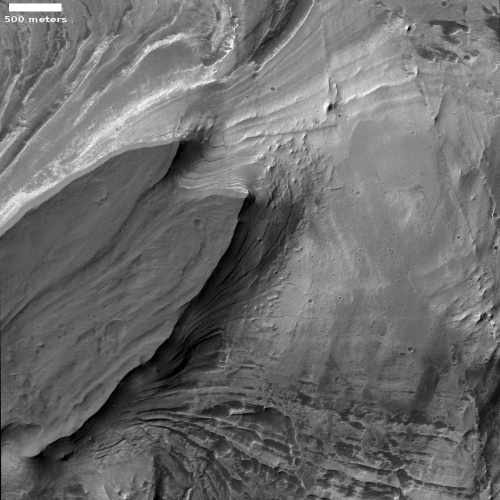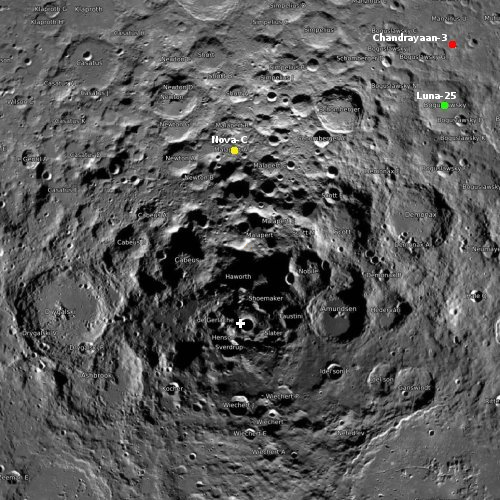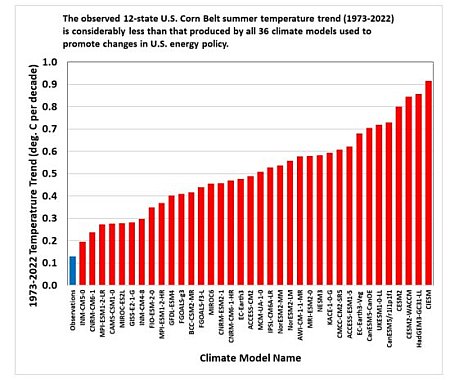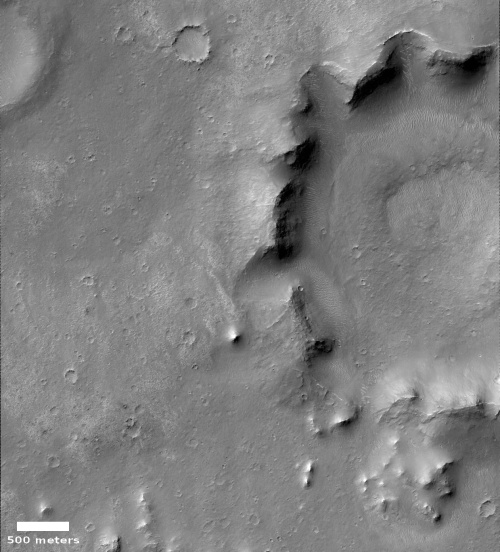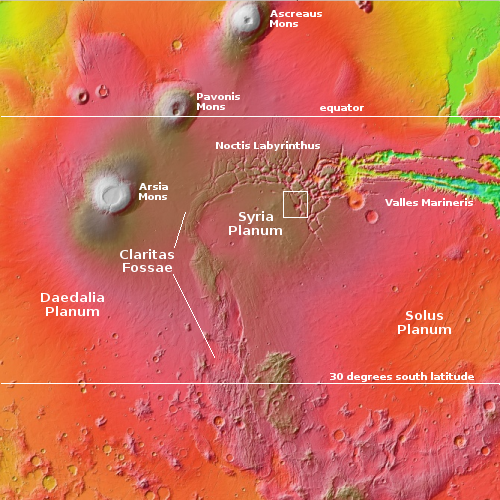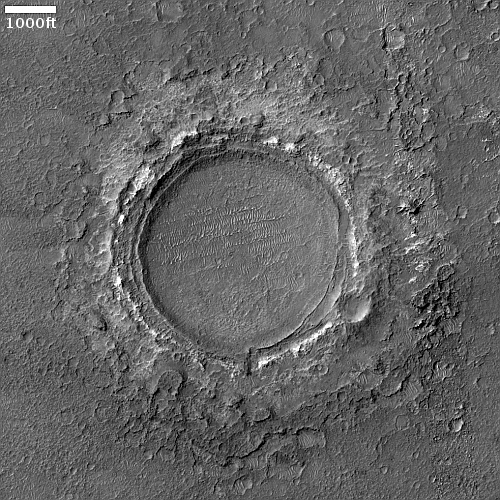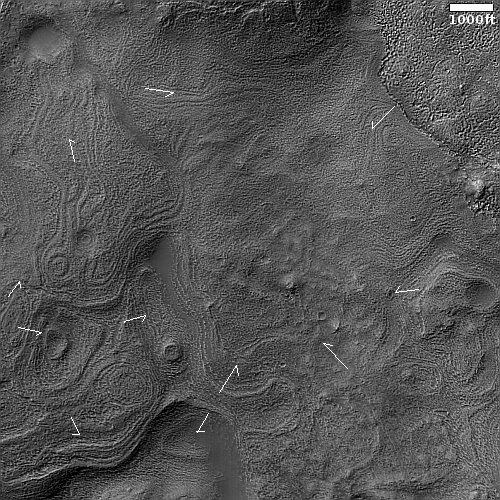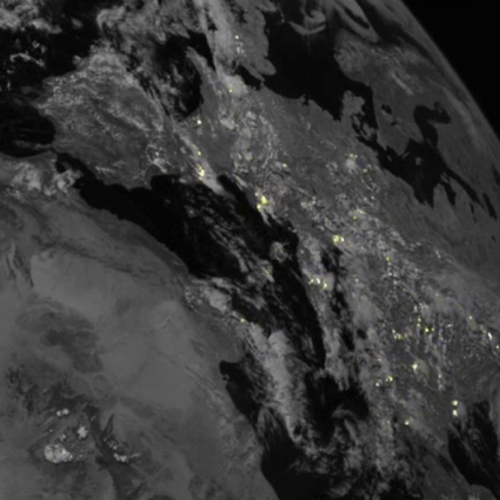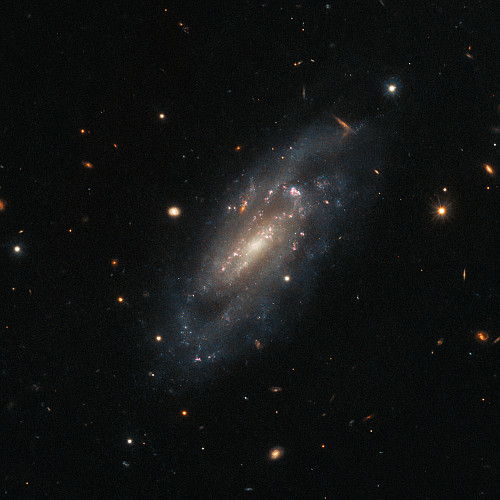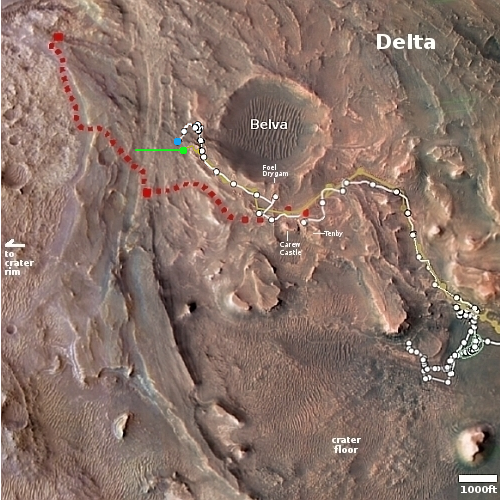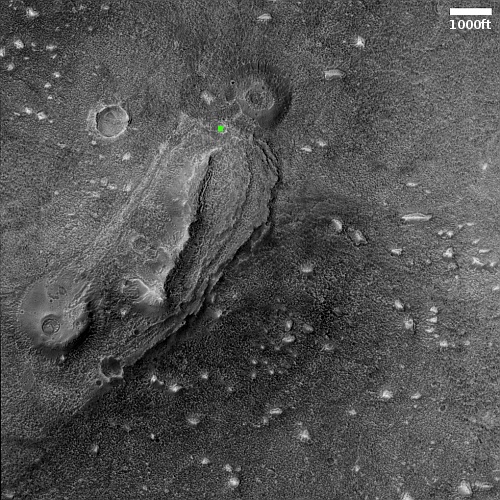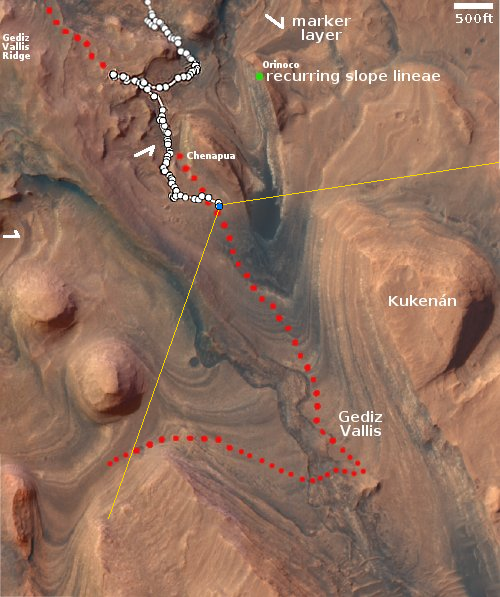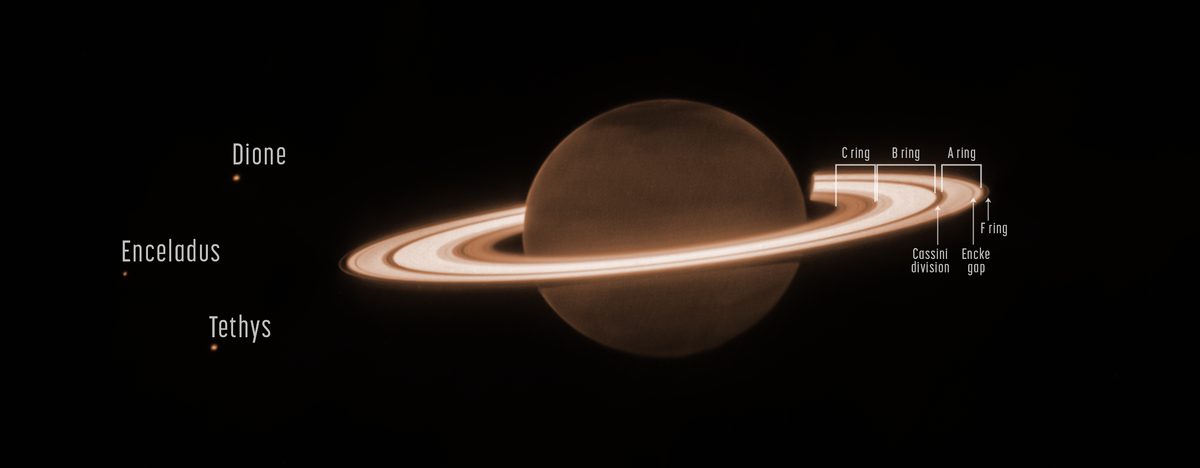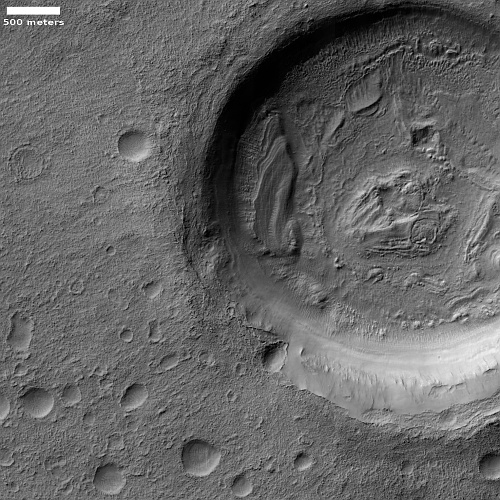More sightseeing in Valles Marineris on Mars
The opportunity to see more mind-blowing examples of spectacular views on Mars compels me to post another great view of a mesatop within Valles Marineris, the biggest known canyon in the solar system. The picture to the right, rotated, cropped, and reduced to post here, was taken on May 14, 2023 by the high resolution camera on Mars Reconnaissance Orbiter (MRO). It shows an 800-foot-high mesa with two points at its end, the cliff wall below highlighted by numerous layers, many alternating between light and dark material.
The erosion features on the top of the mesa suggests some flow down its middle and into the gap between its two end points. This is the dry equatorial region of Mars, so no near surface water is presently found. In the far past maybe ice, or theorized catastrophic floods of water, caused this erosion.
» Read more
The opportunity to see more mind-blowing examples of spectacular views on Mars compels me to post another great view of a mesatop within Valles Marineris, the biggest known canyon in the solar system. The picture to the right, rotated, cropped, and reduced to post here, was taken on May 14, 2023 by the high resolution camera on Mars Reconnaissance Orbiter (MRO). It shows an 800-foot-high mesa with two points at its end, the cliff wall below highlighted by numerous layers, many alternating between light and dark material.
The erosion features on the top of the mesa suggests some flow down its middle and into the gap between its two end points. This is the dry equatorial region of Mars, so no near surface water is presently found. In the far past maybe ice, or theorized catastrophic floods of water, caused this erosion.
» Read more

